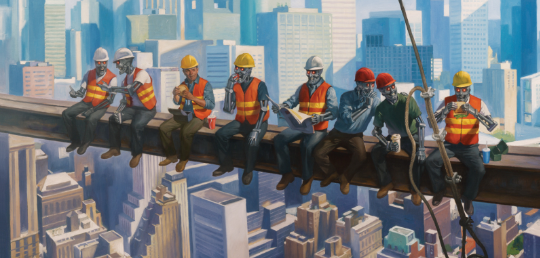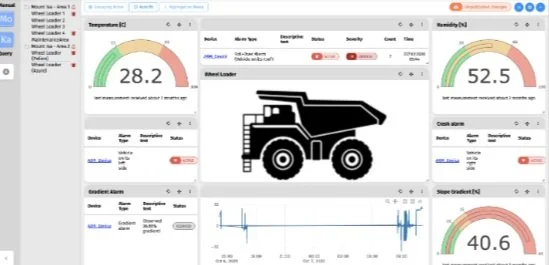Construction Tech Talk: Artificial Intelligence (AI)
“Artificial Intelligence (AI) is revolutionizing the construction industry in many ways. AI technologies like machine learning and computer vision are being used to optimize construction workflows and improve project management. For example, AI can help with building design, predicting project timelines, and detecting defects in construction materials. AI can also assist with equipment maintenance by predicting when equipment needs repairs or replacements, which can reduce downtime and increase productivity. Additionally, AI can improve safety on construction sites by identifying potential hazards and alerting workers to take necessary precautions. As a result, AI is playing a crucial role in making construction more efficient, cost-effective, and safer.”
The above paragraph of this blog was written completely by AI. I asked OpenAI’s ChatGPT to write a paragraph on how AI is used in the construction industry, and it responded in about six seconds. That’s far faster than I can type…and I’m not a slow typist at about 90 words per minute. AI might not be ready to do a full project build by itself just yet, but maybe that’s coming.
AI’s recent dramatic rise is making waves in every major industry and its use in construction will continue to grow in both the immediate and long-term future. A few uses for current AI technology are during project planning and management, safety, and streamlining communication. In the immediate future, AI will likely be tasked with performing repetitive tasks like bricklaying, predictive maintenance, and augmenting realities. Let’s explore some of the practical uses of AI in the construction industry, both today and in the near future.
Using AI Today
With the help of AI-powered software, a construction company can analyze huge amounts of data and make changes to schedules, budgets, and resource allocation as necessary. It can instantly identify scheduling conflicts to better coordinate company leadership, construction crews, subcontractors, or inspections. It can provide accurate budgets at current trajectories as well as providing budgets based on various adjustments like rushed timelines, less crew members on-site, etc. AI can also track resources such as company vehicles and heavy equipment as well as estimate how much Cat-5 cabling and lumber (to name a few) is currently on location or in a storage facility.
One major aspect of the current use of AI is for site safety. Sensors and cameras on a site can identify potential hazards that can be addressed before it becomes an accident. It can analyze real-time footage of people on a site and sound alarms when safety protocols have been breached…even if unintentionally. No one wants to write a letter to an injured (or worse) worker’s family explaining the events of a preventable accident. AI technology can greatly mitigate the frequency and severity of accidents.
Another important way AI is being utilized is in the streamlining of communications between all involved parties. Superintendent Joe wasn’t CC’d on an e-mail string regarding the delivery of x-items and he has nowhere to put them until they’re needed. The delivery company returns the items to the storage facility that is now charging a very painful ‘by the day’ price. A streamlined AI-based communication system can change (and prevent) all of that. It ensures everyone is working from the same information and can greatly reduce human errors to improve the overall efficiency and success of a project.
Using AI Tomorrow
In the immediate future, AI powered robots will be able to perform repetitive or dangerous on-site tasks such as bricklaying or welding at a much faster rate than a human can. A worker would teach the AI-robot what the task is and the basics of completing it. The robot would need to be told where it can gather resources (and eventually, the intelligence portion of AI would learn where to find them by itself!) and what it should look like when complete. The AI could even be asked to offer suggestions on how to improve the process.
AI will also be able to predict when certain construction tools will need maintenance or outright replacement. It will analyze vast amounts of data on certain heavy equipment and determine that the average Make and Model X requires maintenance or part replacements every Y-amount of time. Three months prior, a Project Manager would receive a notification that the Make and Model X will likely require a part replacement soon and to adjust schedules or manpower as necessary. If a crane breaks down mid-project, it could stall a major project and cause embarrassment for the operator and/or owner, let alone become a safety issue.
Another (really cool) way to utilize AI will be to augment reality. It’s similar to the virtual reality that most of us are used to but it also shows the built environment. It can show real-time progress on what to expect as the project comes to life. As a worker physically moves around the project it will detect his or her location, either by GPS or sensors, and move around with the worker. Some cell phone applications already use augmented-GPS for games (if you have kids, you might have heard of Pokémon Go…or maybe you don’t have kids but “have heard of it"—I won’t judge!).
Much Ado About Skynet
AI already has many uses in the construction industry and its uses will likely expand greatly. From streamlining communication to keeping workers safe and increasing profit margins to speeding up the process, some form of AI will likely be involved to some extent in your next project. I know many of us think of the Terminator movie franchise when we think of self-governing AI, but I’m pretty sure Skynet won’t become self-aware and declare a never-ending war on humanity…at least not yet.







